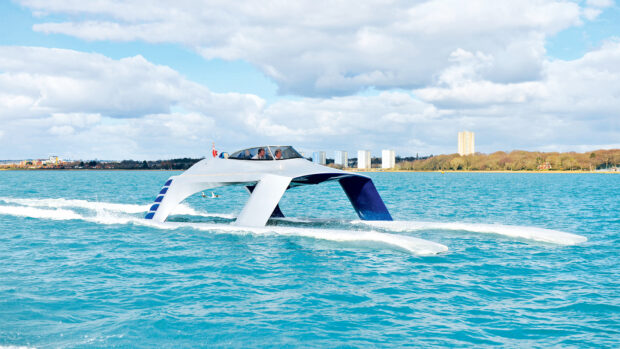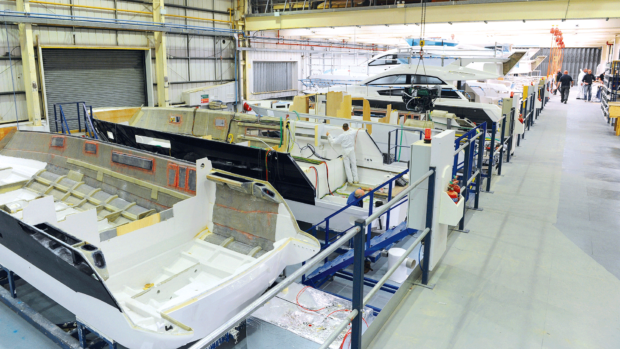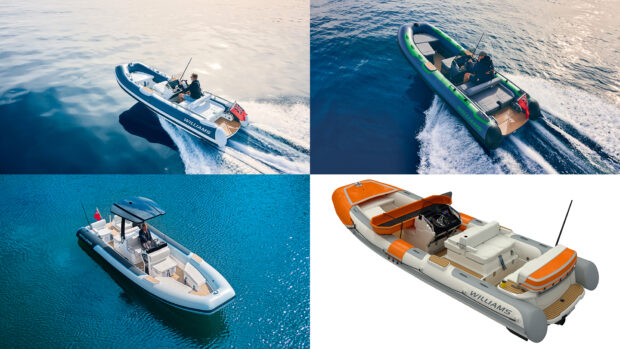The new Seakeeper 1 gyroscopic stabiliser is designed for boats as small as 23ft. We reveal its secrets and put the next size up to the test on an Axopar 28
Seakeeper has launched its smallest, most affordable boat stabiliser ever. Designed for models from 23-30ft weighing up to 5.5 tonnes, the new Seakeeper 1 will cost less than £13,000 ($14,900) when deliveries start in June.
As with the Seakeeper 2 and 3 models, it runs off a 12V DC battery power rather than a 240V generator. That means it can be used on everything from outboard-powered RIBs and sportsboats to compact cruisers and pilothouse craft. Even when you’ve factored in the cost of installation (likely to be around £5,000-£7,000) this goes a long way to fulfilling Seakeeper’s aim of bringing stabilisation to the masses.
The heart of the system is a compact new flywheel encased in a sealed vacuum that spins at up to 9,750rpm. The lack of air resistance enables the flywheel to spin roughly three times faster than would otherwise be the case, which in turn means it weighs up to two-thirds less and draws roughly half the power of a conventional flywheel.

Unlike the larger units the Seakeeper 1 is fully encased inside a watertight plastic shell with a clear viewing window
The whole unit weighs 165kg and consumes between 25-55 amps depending on how hard it is having to work. Its lighter weight also means it has the fastest spool-up time of any Seakeeper with useful stabilisation available in just 15 minutes.
As the boat starts to roll, the flywheel is tilted fore and aft by a hydraulic ram, producing gyroscopic torque to port and starboard that counteracts the roll. This works whether the boat is stationary or under way, although once up to planing speeds, the dynamic stability of the hull starts to override the effect.
Another advantage of the Seakeeper 1 is that the whole system is mounted in a fully enclosed box that measures less than 2ft x 2ft and 16in high with a viewing window to show off its workings. This should make it easier to fit under seats or inside helm consoles and deck lockers than the taller, heavier Seakeeper 2.
Article continues below…

Seakeeper targets high-end motor yachts with Seakeeper 18 gyroscopic stabiliser

Could boat stabilisers spell the end of rock ‘n’ roll?
The latest developments in boat stabilisers and control systems are heralding new levels of on-board comfort, writes our technical guru
Nor are there any exposed parts that could snag loose items that may have to share the same locker space. A small keypad display on top of the unit means you can control it directly from here or via a remote unit at the helm.
It’s not all good news though; the Seakeeper 1 doesn’t have as much righting power as the larger Seakeeper 2. In fact, with a maximum angular momentum of 1,000NMS, it has only half the stabilising power of the Seakeeper 2’s 2,000NMS.
As with all gyroscopes it also needs regular servicing to keep it running reliably. This involves inspecting and changing some of the fluids and anodes at least annually or every 1,000 hours at a cost of around £400.

Now sportsboats and RIBs as small as 23ft can benefit from stabilisation
Typically a Seakeeper’s running hours tend to be around double that of the boat’s, so most owners are unlikely to exceed the bearings’ expected service life of 6,000 hours. In the event that you do, either the sphere has to be replaced or Seakeeper will give you a 40% trade-in value for your old unit against the cost of a new one.
Even taking everything into account, the new Seakeeper 1 really does look set to transform the lives of thousands of small boat owners.
Seakeeper 2 sea trial
Although no press have yet been allowed to try the new Seakeeper 1, we did get a chance to experience a Seakeeper 2 fitted to an Axopar 28 at the Cannes Boat Show last September.
The first thing to note is that the Seakeeper 2 is arguably overspecified for the Axopar’s 28ft 8in and 2.2 tonnes (including engine) given that it is claimed to be powerful enough for boats of up to 35ft and 7.5 tonnes. Now that the Seakeeper 1 is available, that would probably be the recommended choice.
That said, the Seakeeper 2 fitted neatly into the space normally occupied by the bed in the 28 T-Top’s optional sunpad/aft cabin. As well as the Seakeeper 2 itself, which was fitted with a special Perspex cover for photography, this left room for the two additional 90AH (amp hour) batteries recommended to power it.
These should give a maximum run time of around six hours in normal usage or more if the engine is running for some of that time. The 300hp Mercury Verado outboard’s standard 150 amp alternator is more than powerful enough to keep these charged as well as the boat’s starter battery.

The Seakeeper 2 was installed in the aft cabin
The Seakeeper 2 takes around 25 minutes to spool up to stabilisation speed and a further 10 minutes to reach its maximum 9,000rpm. The software was hooked up to the boat’s Garmin MFD, allowing us to switch stabilisation on and off, and to display the peak roll angle.
At planing speeds it’s hard to detect just how effective this is, although you can sense a certain stiffening of attitude that keeps the boat level and resists its tendency to chine-ride over wakes. Thankfully, this doesn’t seem to affect the way it corners as it still leans into the turn just as you’d expect.
It’s at displacement speeds and at rest when you really notice the difference. We were regularly seeing roll angles of 10-20° from the multiple wakes and underlying swell off Cannes. Switching on maximum stabilisation instantly knocked these back to 1° or 2° either side.
It’s an odd sensation as you can feel the boat resisting the urge to roll, like an athlete tensing their core muscles to prevent them falling off balance, but once you learn to trust it, it is a genuinely transformative experience. In an anchorage or on a mooring buoy where you can’t escape the swell, it really does make the difference between a relaxing day on the water and going home early before your guests feel seasick.
First published in the May 2020 edition of Motor Boat & Yachting.










